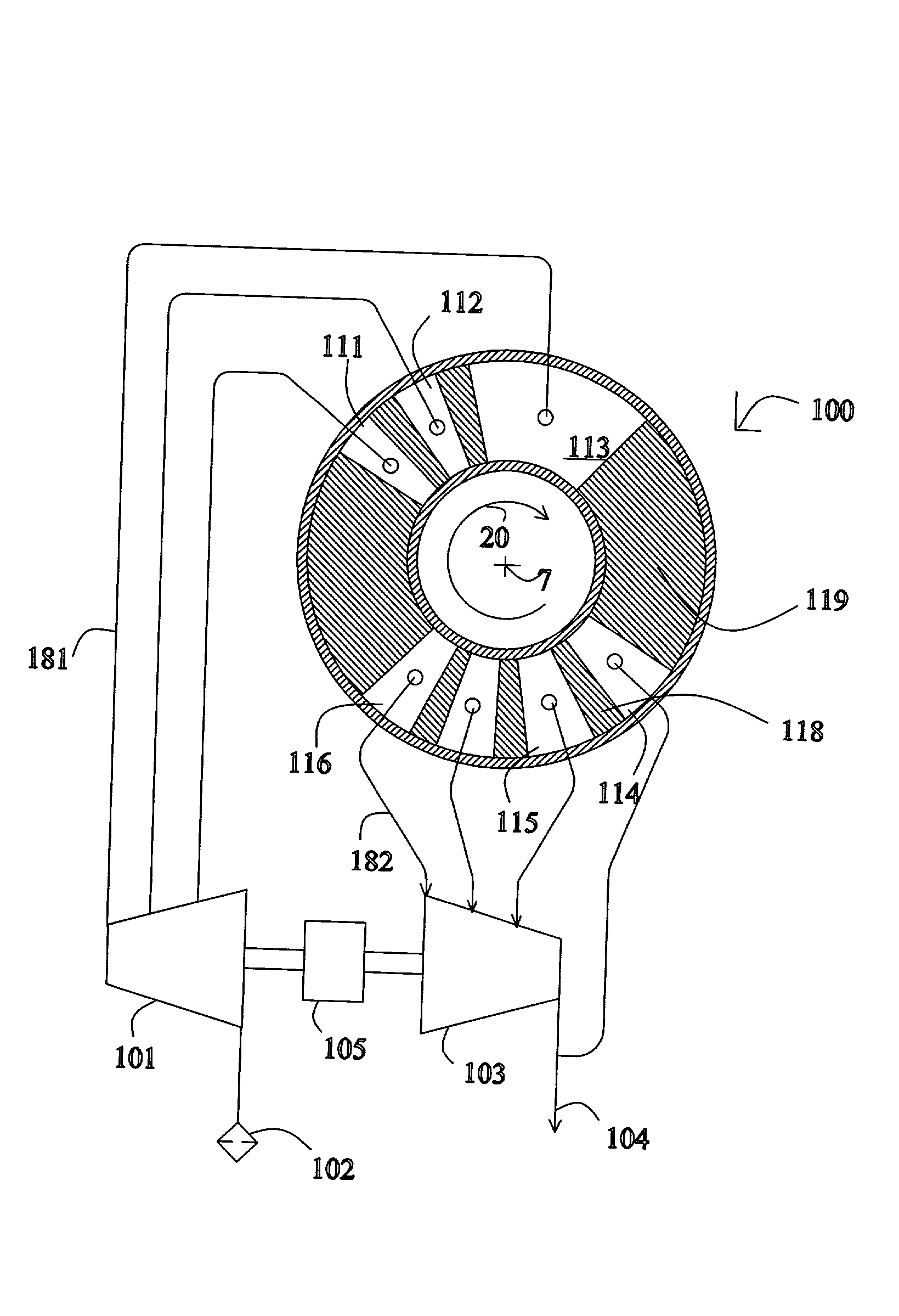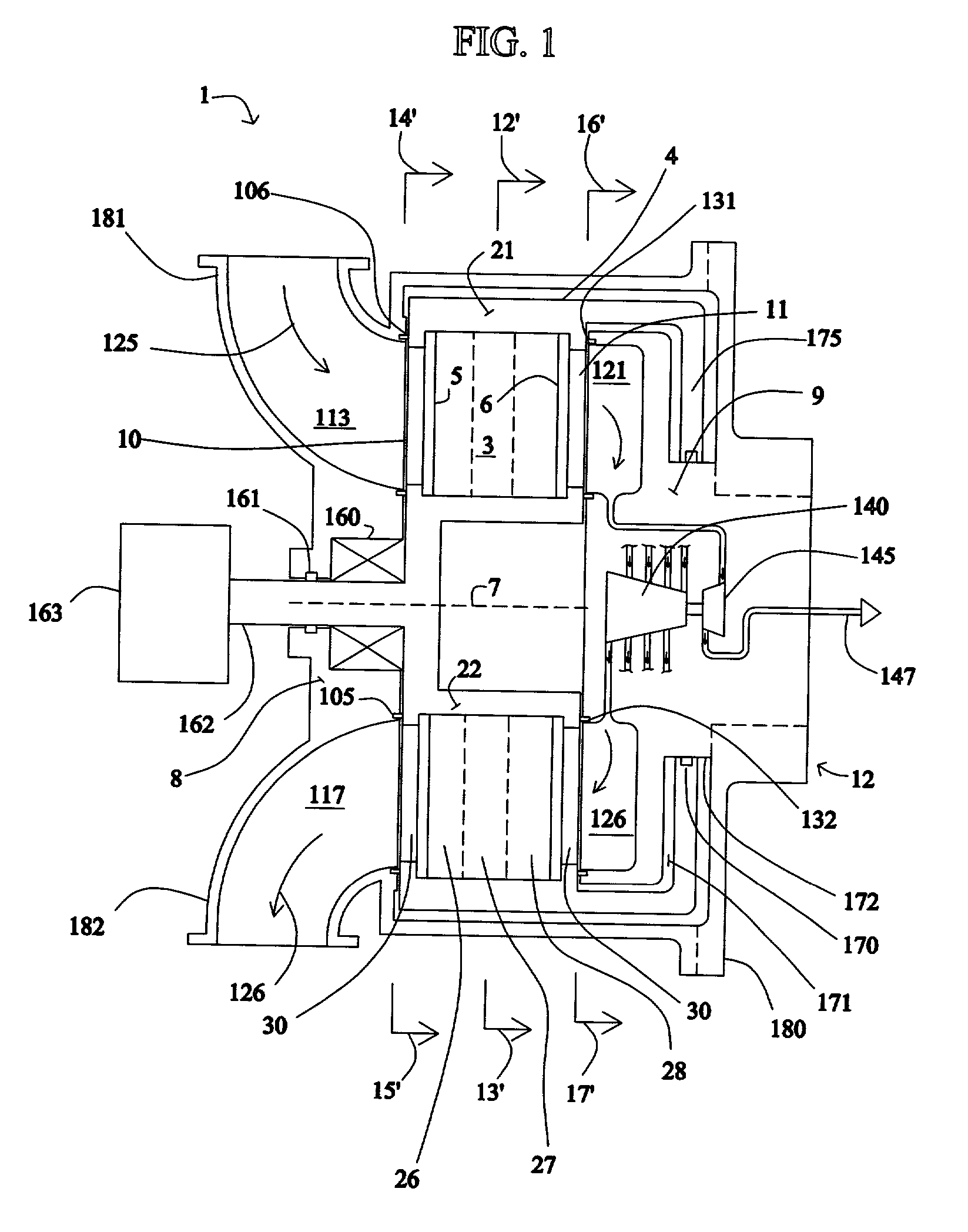Systems and processes for providing hydrogen to fuel cells
- Summary
- Abstract
- Description
- Claims
- Application Information
AI Technical Summary
Benefits of technology
Problems solved by technology
Method used
Image
Examples
Embodiment Construction
[0061] FIGS. 1-5
[0062] One embodiment of an oxygen-enrichment rotary PSA module for use with the described methods and systems is described below in connection with FIGS. 1-5B, but the same or similar rotary PSA module configuration could be used for hydrogen enrichment (i.e., separation) in the disclosed electrical current generating systems. As used herein, a "rotary PSA" includes, but is not limited to, either a PSA wherein the adsorbent bed rotates relative to a fixed valve face or stator or a PSA wherein the valve face or stator rotates relative to a fixed adsorbent bed.
[0063] FIG. 1 shows a rotary PSA module 1, which includes a number "N" of adsorbers 3 in adsorber housing body 4. Each adsorber has a first end 5 and a second end 6, with a flow path therebetween contacting a nitrogen-selective adsorbent (for oxygen enrichment). The adsorbers are arrayed about axis 7 of the adsorber housing body. The housing body 4 is in relative rotary motion about axis 7 with first and second ...
PUM
| Property | Measurement | Unit |
|---|---|---|
| Time | aaaaa | aaaaa |
| Angle | aaaaa | aaaaa |
| Temperature | aaaaa | aaaaa |
Abstract
Description
Claims
Application Information
 Login to View More
Login to View More - R&D
- Intellectual Property
- Life Sciences
- Materials
- Tech Scout
- Unparalleled Data Quality
- Higher Quality Content
- 60% Fewer Hallucinations
Browse by: Latest US Patents, China's latest patents, Technical Efficacy Thesaurus, Application Domain, Technology Topic, Popular Technical Reports.
© 2025 PatSnap. All rights reserved.Legal|Privacy policy|Modern Slavery Act Transparency Statement|Sitemap|About US| Contact US: help@patsnap.com



